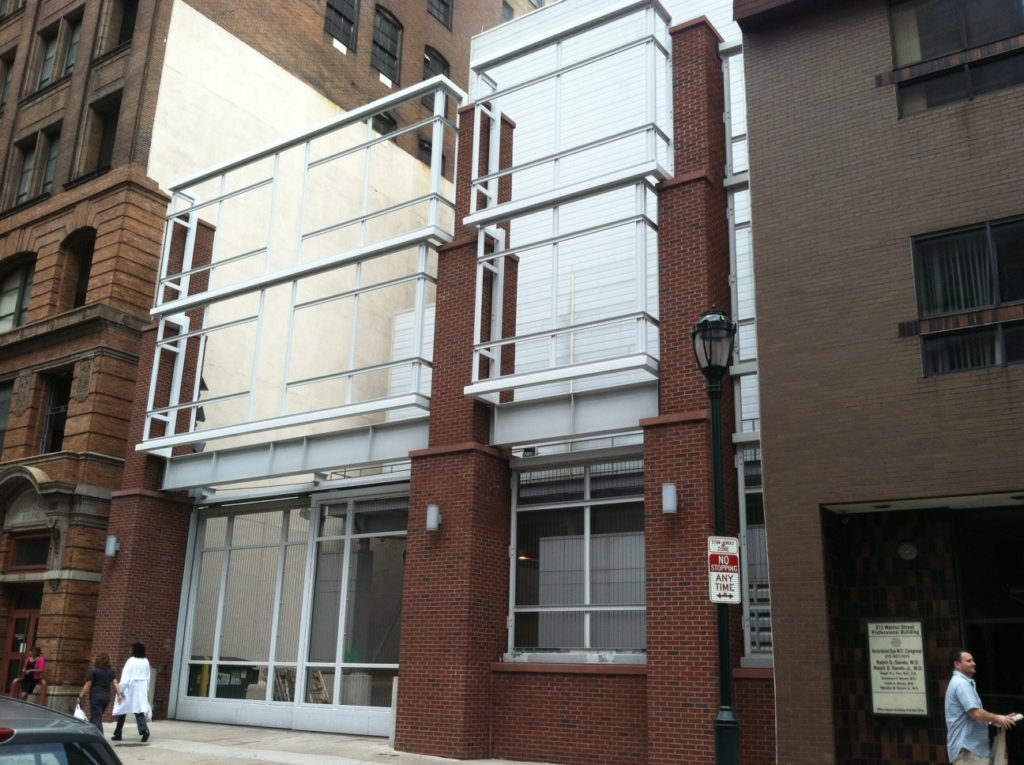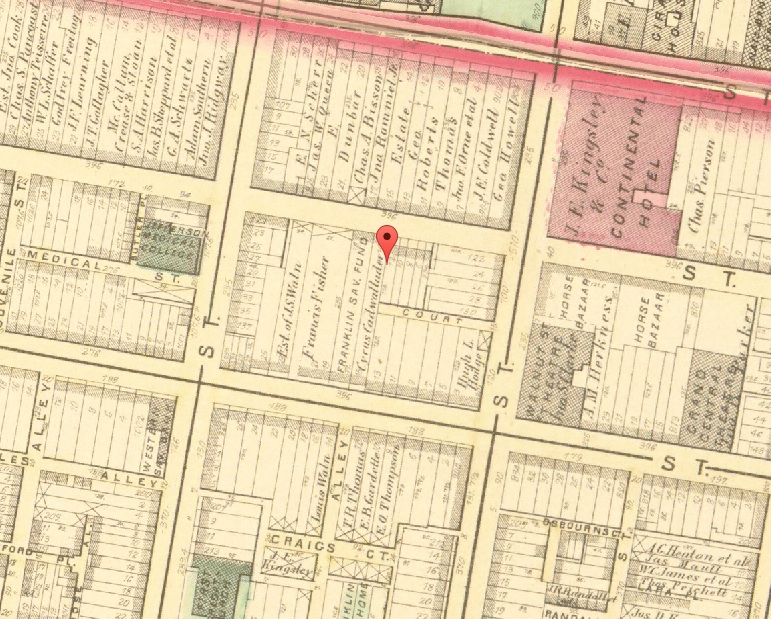In the latter part of the 19th century, Philadelphia was well known for its preponderance of groundbreaking and important banks. The Franklin Savings Fund was not one of these. To the contrary, the building at 917 Walnut St. would earn notoriety as an early example of greed and malfeasance at an American bank. The image here below, taken from G.W. Bromley’s 1875 Philadelphia Atlas, shows 917 Walnut St. during the Franklin Saving Fund’s occupancy. Its neighbor at 915 Walnut is identified in the same image as Cyrus Cadwallader, Treasurer for the Fund.
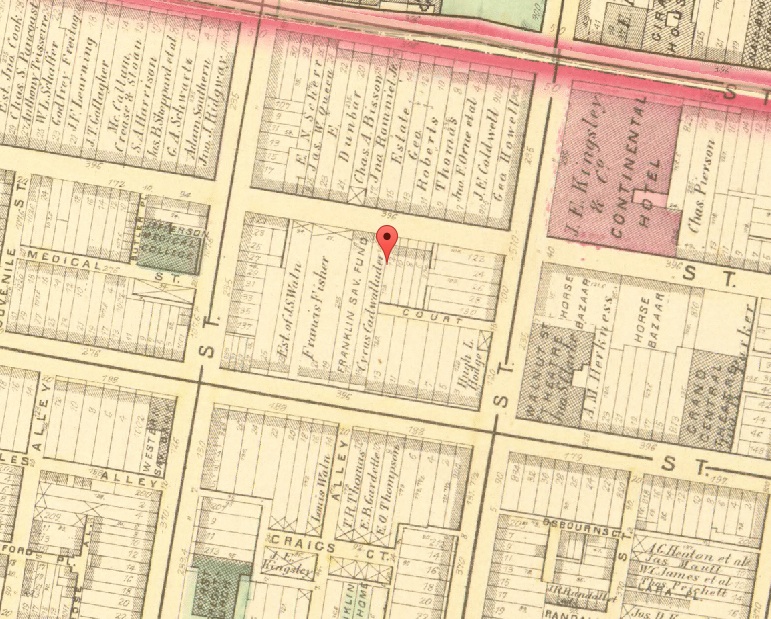
Evidence suggests that the Savings Fund and Mr. Cadwallader were not always on the best terms as neighbors go. According to The Federal Cases, the Savings Fund sued Mr. Cadwallader in 1874 over a matter of libel. Soon, however, it would be the Savings Fund that would find itself on the defensive, with a host of revelations showing Cadwallader and a number of others to be the victims of fraud and embezzlement. These circumstances and the failure of the Savings Fund ultimately brought both 915 and 917 Walnut Street under one roof. Naturally, that roof would be enjoyed by an entirely new occupant. Philadelphia Business Buildings shows that, by 1885, 915-917 Walnut Street was home to J. Benton Young, Real Estate Broker.
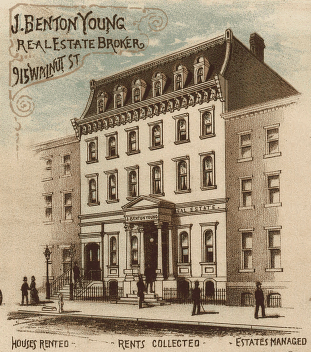
In only a matter of a few years, Young would be out and the Irving House Hotel would be in. The photo below, provided by Curator of Shit, shows the hotel not long after its opening.
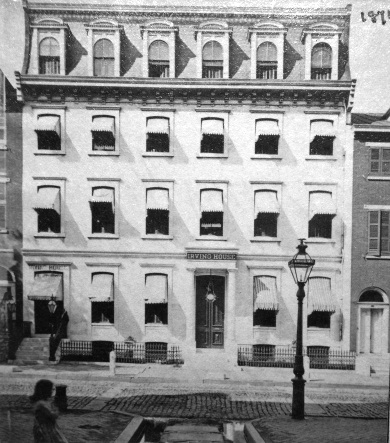
According to Philadelphia and its Environs, a night’s stay at the Irving would run you somewhere between $2.00 to $2.50 in 1898. Curator also provides us with the floor plan for the Irving during its heyday.
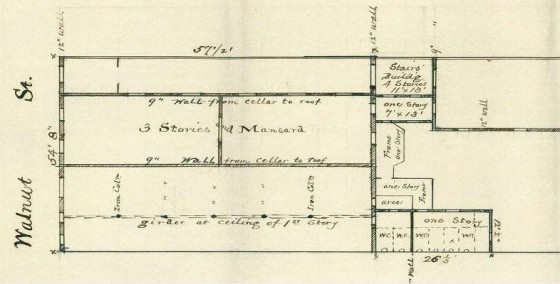
The Works Progress Administration Land Use Map from 1942 shows that the Irving House had by then been replaced by the Hotel Senator.
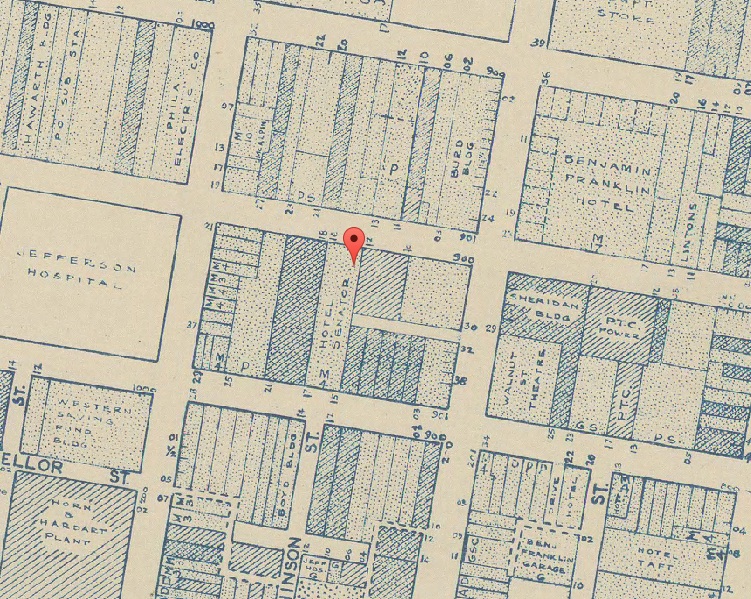
While we were unable to locate images of the hotel, Tristate Jazz does tell us that the first floor of the Senator was home to the legendary Rendezvous jazz club. Greats such as Louie Armstrong, Ella Fitzgerald and Sarah Vaughan graced the stage beneath the Hotel Senator during the club’s lifetime, which spanned from 1947 to 1955. The Hotel Senator would be gone shortly thereafter, leaving the building vacant as it entered the 1960s. The current structure, a modern brick building with no markings indicating its purpose, appears to mostly house dumpsters. If any of our vigilant readers knows what actually goes on in there, feel free to let us know!
